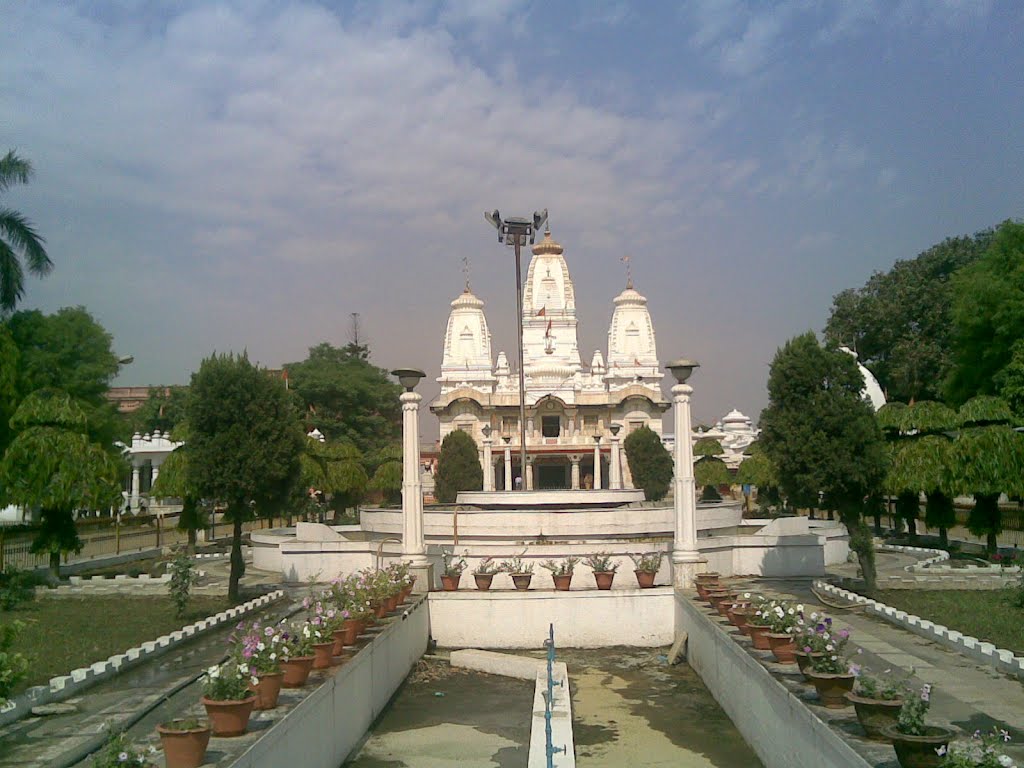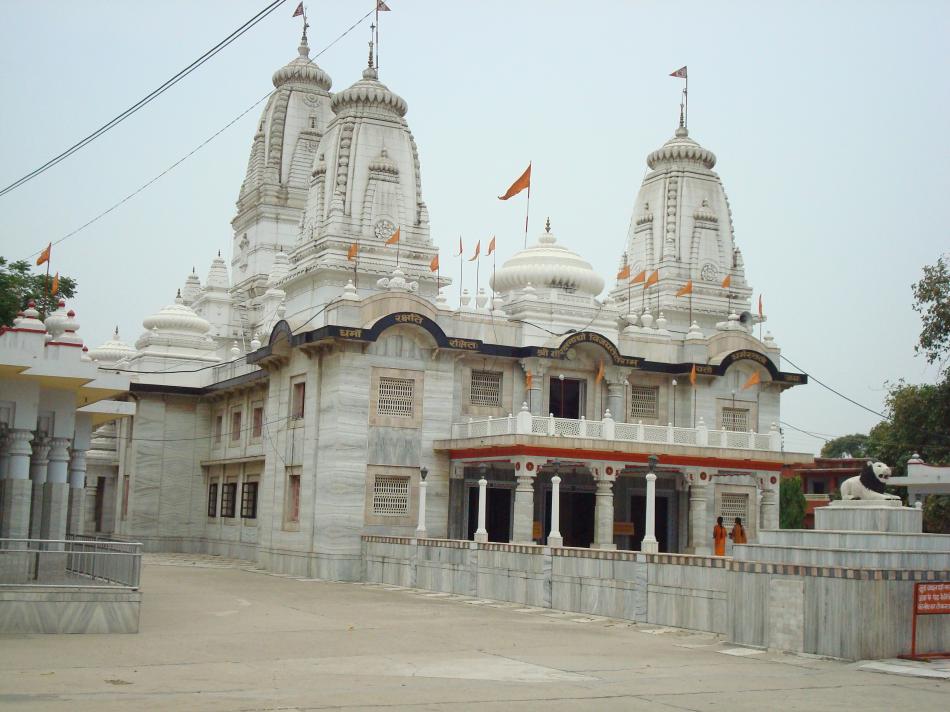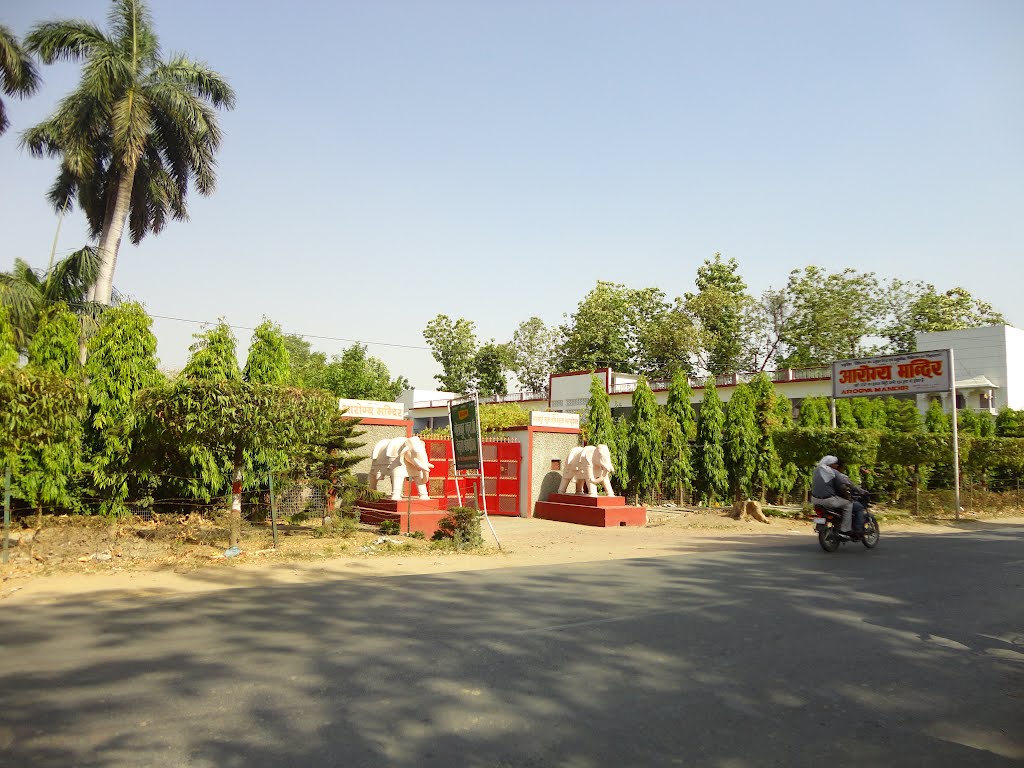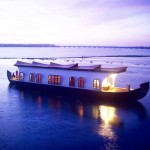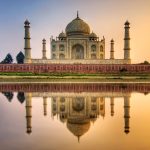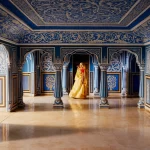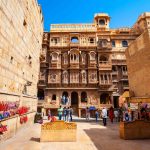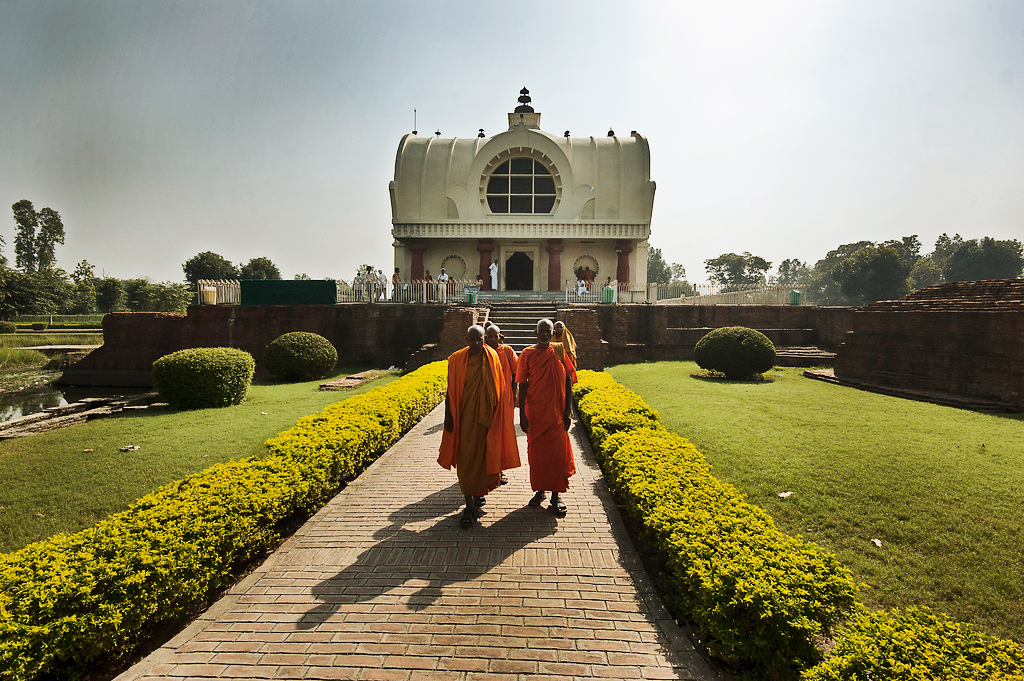
Kushinagar
Grooming the pastoral landscape, the small hamlet of Kushinagar, 53 km in west of city Gorakhpur, is revered as the site of Buddha’s Mahaparinirvana. On his birth he stepped seven steps in every direction and declared it as his lastKushinagar birth.It was known as the place of death and cremation, that marked his final liberation from the cycles of death and rebirth which will be a holy site for the followers of Lord Buddha.
Kushinara, Buddha’s Nirvana site then called, was a small town in the kingdom of the Mallas, surrounded by a thick forest cover of Sal trees. It remained hidden & unknown, until the late nineteenth century, when archaeologists rediscovered the site, and began excavating the facts to rediscover the site as the holy Buddha-recognition.
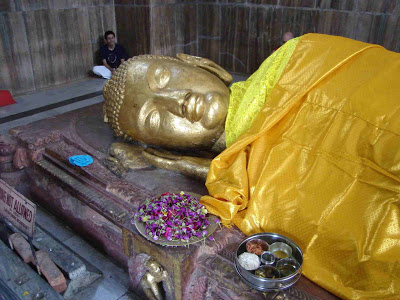
The Buddha’s living nirvana, achieved during enlightenment, as death transforms to nirvana without human residue. Self possessed, without psychological pain, untroubled by the thoughts of death, Buddha identified four places of future pilgrimage: the sites of his birth, enlightenment, first sermon, and death. “But don’t hinder yourself by honouring my remains,” he added.
On reaching the village of Kushinagar of Mallas, on the further side of the Hiranyavati River, Buddha realised that his end was fast approaching. He told Ananda to prepare a bed for him with its head turned towards the north between two sal trees. Ananda who served him for 20 years was deeply upset. “Don’t grieve, Ananda!” Buddha consoled him. “The nature of things dictates that we must leave those dear to us. Everything born contains its own cessation. I too, Ananda, am grown old, and full of years, my journey is drawing to its close, I am turning 80 years of age, and just as a worn-out cart can only with much additional care be made to move along, so too the body of Buddha can only be kept going with much additional care”.
As desired by Buddha, the Mallas of Kushinagar were informed of his impending death, and they came to pay respect Kushinagarto him. Among them was a mendicant named Subhadra, a 120-year-old Brahmin. Ananda had earlier turned him away but when Buddha overheard this he called the Brahmin to his side. He was admitted to the Sangha (Buddhist order) and immediately after his conversion he passed away.
When the third quarter of the night approached, Buddha asked his disciples three times if there were any doubts about the teachings or the disciplines. The Bhikkhus stood silent. “Not one, Ananda, has misgivings. All will eventually reach enlightenment. Buddha then uttered his final words, “Listen, Bhikkhus, I say this: all conditioned things are subject to decay. Strive with diligence”. He passed into meditation absorptions and entered mahaparinirvana (the great passing away). It was the full moon of the month of Vaisakha (April-May) and the year was probably between 487 and 488 B.C. However, according to the Sri Lankan tradition and other southeastern countries, it is believed that the Buddha entered Parinirvana in 544-543 B.C.
For the next six days the body of the Great Master was laid in state. Preparations were made for his funeral under the direction of Anirudha a cousin and follower of the Buddha. On the seventh day, after honouring the body with perfumes and garlands, it was taken to the Mukutbandhana Chaitya, the sacred shrine of the Mallas. The last ceremony was performed by Maha Kashyapa and the body of the Great Master was cremated with due honour. When the cremation was complete, the Mallas collected the ash as relics, which consisted of a skull, bone, teeth and inner and outer shrouds. The relics were then distributed into eight shares amongst the representatives of the other eight Kingdoms, which constituted ancient northern India. These relics were again subdivided after King Ashoka decided to build 84,000 stupas. Today these relics are enshrined in stupas across Asia.
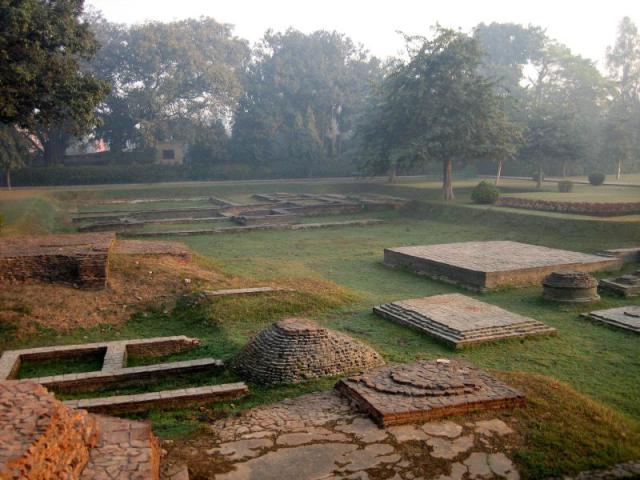
THE EXCAVATION OF KUSHINAGAR:
Kushinagar During British rule in INDIA a british officer named Mr. A.C.L. Carlleyle started for Kasia from Gorakhpur. On his arrival he put up his camp near the black stone statue of the Buddha, which was identified by General Cunningham in 1861-62 and is now the Matha kuar Temple. At that time the entire Buddha Temple mound was covered with dense thorny jungle and at the east end was mass of broken bricks rising to about 40′ above the ground. Nothing was visible of the temple remains except the high pile of bricks.
Carlleyle started excavating this mound and found that it contained a base of a square small temple measuring about 23′ from the outside. The door of the temple was on the East Side. Against the Western Wall he found the remains of the brick pedestal on which the black statue originally stood.
He was searching for the Buddha temple containing the famous nirvana statue, which was, mentioned by Huein Tsang, the Chinese traveller. He sunk a shaft in the centre of the mound and after digging 10′ he came on the upper part of the thigh of the huge stone statue. He then hurried his excavation and uncovered the entire length of the living Buddha statue in a chamber. The chamber was 20′ in the length and 12′ in width.
The statue was lying on broken Singhasan (Resting Seat) and was shattered and broken in many places -The upper part of the leg, both feet, left hand, portion of the left arm and portion of the body about west and upper part of the head of the head were entirely gone. The statue was made of sandstone of a mixed colour mostly dark red and clay colour probably from the Chunar hills near Benaras.
The length of the statue was about 24′ with width of five and half feet. After Carlleyle had completed the excavation ofKushinagar the holy temple, he started repair of both the statue and the temple. When he was going to begin the repair of the statue he found that some other parts of the statue had been built in under it in the Singhasan (seat). He then had a portion of the statue lifted from the Singhasan and dug below the Singhasan and found most of the broken pieces of the statue. Hence, he was able to restore most of the statue.
In the inner doorway of the temple he found ancient cup shaped iron pivot hinges with some portion of the black burnt wood clinging to it. He also found various human bones and many burnt substances in the outer chamber. It appeared that Buddhism had met a very violent end in the ancient city of Kushinara.
Carllyel then excavated the great mound of the ruined stupa, which was, situated about 13′ to the east of the temple. Afterwards he removed some of the top portions of the brick in order to lessen the weight on the top as the stupa was leaning towards the temple and could have fallen on it.

The circular dome or the neck of the stupa stood about 13′ east of the back wall of the temple. The temple which was repaired by Carlleyle was not the original or most ancient temple as it was evident from the site that it was not only the temple that had been built there, It was surrounded on 3 sides by the ruined remains of the base of the thick wall which extended from the front along the sides within 6 ft. of the present temple.
In this way a major historic discovery was carried out by Carlleyle and it was proved beyond all doubts that this was the famous ancient city of Kushinagar of the ‘Malla’ kingdom where Lord Buddha had attained parinirvana and was cremated.
Today, Kushinagar is rediscovering its roots, as a centre for international Buddhism, and home to many viharas, including a Tibetan gompa devoted to Sakyamuni, a Burmese vihara, and temples from China and Japan.The Buddha’s last days are described in the Pali text called the Great Parinirvana Sutra.

